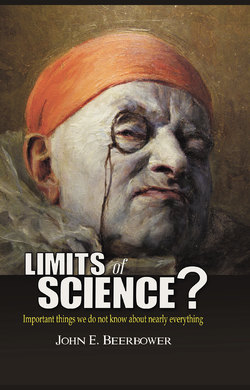Читать книгу Limits of Science? - John E. Beerbower - Страница 57
На сайте Литреса книга снята с продажи.
ОглавлениеThe Subject of Economics
The branch of human “knowledge” known as economics has ancient roots, reflecting man’s long-standing interest in trade and money (media of exchange). But, then, we see in the eighteenth century a new focus on two rather distinct questions:
Why are certain nations richer than others, even when one controls for natural resources?
Why are diamonds—intrinsically useless—worth more than water—an essential of life?
Some striking insights into the first question were achieved. For example, Adam Smith identified the importance of the division of labor and specialization. Smith attributed much of the progress and promise of industrialized economies to the benefits that were derived from the increasing division of labor that greater scale and free trade would enable. The benefits of the specialization that is engendered by the division of labor include improved skill at the task at hand resulting from repetition, improved techniques that may be discovered as a result of the greater experience gained with specialization, new technology made feasible as a result of the increases scale of the process at issue, reduced time and resources spent in frequently changing tasks, efficiencies in training for specialized jobs and, even, the opportunities to capture differences in relative differential abilities in performing particular tasks (although, the full theory of “comparative advantage” awaited David Ricardo, 50 years later). See, e.g., Matt Ridley, The Origins of Virtue, pp.42–4.4 Nonetheless,the question has begged a convincing answer for almost 250 years (during which time, the answer has undoubtedly changed for different places and different stages of development).
In contrast, the study of what came to be known as the theory of value was astonishingly successful.
Value theory
The second question was answered at the end of the nineteenth century (Adam Smith and, even, David Ricardo had sought to find value in the “labor content” of goods, as—of course—did Karl Marx) by the theory of the interaction of supply and demand. Value is determined by the interaction of the costs of production and the relative scarcity (relative to demand) of the good in question. Thus, while water is essential for life, its relative abundance and low cost of “production” cause water generally to be cheap or, in some places, free. Diamonds (gem quality) have no practical utility as such, but they are scarce and costly to obtain. When sufficient demand arose for diamonds, presumably for aesthetic and status-securing purposes, the value became high. People were prepared to pay large sums because of the scarcity.
The high values previously placed by earlier societies on other scarce, but useful, materials like iron and bronze, presumably reflected the worth associated with status as well as that of productivity. Superficially, the theory seemed readily to resolve the apparent paradox. Subsequent development of the theory of supply and demand generated the concept of marginal analysis—the understanding that decisions were made and prices (and many other things) are determined at the margin. Marginal analysis lent itself to mathematical modeling, which, with the application of the calculus, generated a wide range of intriguing concepts (e.g., elasticity of demand).
Value theory and the related areas of industrial organization, focusing on the allocation of scarce resources, grew very rapidly, with impressive progress. The graphical representation of demand and supply curves suggested related areas of investigation through graphical and algebraic presentation of the nature of demand and the nature of supply. Analyses of production functions generating supply curves led to the analysis of the organizational structure of production (and businesses) and of markets. The result, as seen in Alfred Marshall’s Principles of Economics (Ninth Edition, 1961, initially published in 1890), is an elaborate, elegant and almost comprehensive theory of the derivation and satisfaction of human material wants and needs. Because of the use of mathematics and mathematical reasoning, the neo-classical theory also had the trappings of a science.
Micro and macro and more
As efforts were made to make neo-classical theory more comprehensive, economics began to disintegrate into multiple parts or sub-disciplines. The terms micro-economics and macro-economics describe fields focused on value theory and industrial organization, on the one hand, and trends in the economy and the role of money, on the other. Game theory became a specialty. More intensive work in each specialty yielded fruit, as one would expect. What might not have been expected was that the progress in the sub-categories appears not to be bringing economists closer to a unified theory but, instead, to be leaving them with relatively unconnected theories for the individual person or decision-maker, for individual markets and for economies as a whole.
So, over time, economists have generated theories of consumer behavior, theories of the firm, theories of markets, theories of international trade and theories of the economy. We have micro-economics developed from value theory based upon supply and demand; we have macro-economics that attempts to explain money, finance and economic cycles. We also have behavioral economics, game theory, general equilibrium models and so on. What we certainly do not have is a unified theory of everything economic. That, however, is not a lacking unique to economics or, even, to the social sciences. As we shall discuss, it is clearly true of the state of all branches of the natural sciences as well.5
